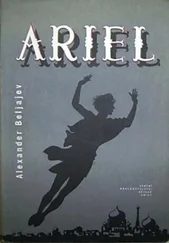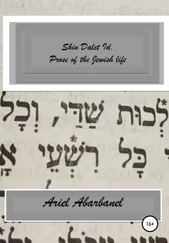Ariel Toaff - Blood Passover
Здесь есть возможность читать онлайн «Ariel Toaff - Blood Passover» весь текст электронной книги совершенно бесплатно (целиком полную версию без сокращений). В некоторых случаях можно слушать аудио, скачать через торрент в формате fb2 и присутствует краткое содержание. Жанр: Религиоведение, на английском языке. Описание произведения, (предисловие) а так же отзывы посетителей доступны на портале библиотеки ЛибКат.
- Название:Blood Passover
- Автор:
- Жанр:
- Год:неизвестен
- ISBN:нет данных
- Рейтинг книги:3 / 5. Голосов: 1
-
Избранное:Добавить в избранное
- Отзывы:
-
Ваша оценка:
- 60
- 1
- 2
- 3
- 4
- 5
Blood Passover: краткое содержание, описание и аннотация
Предлагаем к чтению аннотацию, описание, краткое содержание или предисловие (зависит от того, что написал сам автор книги «Blood Passover»). Если вы не нашли необходимую информацию о книге — напишите в комментариях, мы постараемся отыскать её.
Blood Passover — читать онлайн бесплатно полную книгу (весь текст) целиком
Ниже представлен текст книги, разбитый по страницам. Система сохранения места последней прочитанной страницы, позволяет с удобством читать онлайн бесплатно книгу «Blood Passover», без необходимости каждый раз заново искать на чём Вы остановились. Поставьте закладку, и сможете в любой момент перейти на страницу, на которой закончили чтение.
Интервал:
Закладка:
While the whole theme of Jesus’s adulterous generation was not at all new, this was not because of any claim that the Virgin was impregnated during her menstrual period. In fact, this only appeared in a few versions of the Toledot Yeshu - the so-called "Hebraic counter- Gospels", written in the German-speaking territories between the 15th and 16th centuries. Samuele’s reference to the anti-Christian text containing the accusation that Christ was "a bastard conceived by an impure woman" ( mamzer ben ha-niddah ) was therefore chronologically somewhat premature and doubtlessly characteristic of the intolerant climate of a certain section of late medieval Ashkenazi Judaism [614] In this regard, see R. Di Segni, Due nuove fonti sulle "Toledot Jeshu", in "La Rassegna Mensile di Israel", LV (1989), pp. 131-132. The author stresses that "the importance of the information inferred from the Trent trial, which, for the moment, it is the oldest source which explicitly considers Jesus to be the son of a menstruating woman” and records “worthy of note” the “German origin of the narrator, which could cause one to assume that the information is of the same origin as well”. It seems implicit that Riccardo Di Segni does not consider the tale of Samuele of Nuremberg’s anti-Christian sermon as the fruit of a suggestive pressures of the Trent judges upon the accused, but he places it in relationship with the reasons for the anti-Christian polemic present in contemporary Ashkenazi Judaism with peculiar sociocultural characteristics. On the story of Jesus the "bastard, son of a menstruating woman" in the Toledot Yeshu and on its importance, see Id., Il Vangelo del Ghetto. Le "storie di Gesù": leggende e documenti della tradizione medievale ebraica , Rome, 1985, pp. 120-123.
. It is inconceivable to imagine that the naïve Lazzaro da Serravalle should have given free rein to his fantasy by inventing the anti-Christian thematic details contained in Samuele’s sermon. It is even less plausible to imagine that the Trent judges and inquisitors might have been expert connoisseurs of the various texts of the Toledot Yeshu .
A few years later, in 1488, the Jews of the Duchy of Milan, on trial for contempt of the Christian religion, were asked by the judges whether or not they actually referred to Jesus as a bastard and the son of a menstruating woman. In particular, they demanded whether any expressions of this kind, which originated in the texts of the Toledot Yeshu, appeared in a liturgical composition beginning with the words " ani, anì ha-medabber ("It is I, I who speak..."), and in the form of the secondary feasts
p. 197]
of the German rite [615] The defendants were required to respond in relation to the "verba scripta in dicto libro Mazor ( recte: Machazor , the liturgical form for the feasts) sibi ostensa in capitulo quod incipit: Anni, anni amezaber (recte: anì, anìha-medabber ), videlicet in lingua latina: Io sonno quello che parla" (cfr. A. Antoniazzi Villa, Un processo contro gli ebrei nella Milano del 1488 , Milan, 1986, pp. 132-135).
. Many of the defendants responded in the affirmative and admitted that, in that prayer, Jesus was indeed referred to as having been "born of a woman having her menstrual period", and "born of a polluted woman, that is, one who was menstruating". In fact, the oldest versions of the Ashkenazi handbook of prayers for ceremonial solemnities contains a commemorative elegy for the martyrs, massacre victims and suicides in sanctification of God’s name, entitled ani, ani ha-medabber , "It is I, I who speak....", attributed to Rabbi Efraim di Isacco da Regensburg, and intended for recital during the Fast of Expiation (Kippur). The elegy contains an explicit reference to Jesus as "conceived of a menstruating woman", in conformity with a motif which was widespread in the German versions of the Toledot Yeshu [616] Machazor le-yamim noraim le-fì minhage' bene' Ashkenaz ("Handbook of solemnities according to the custom of the German Jews"). II: Yom Kippur , by E.D. Goldshmidt, Jerusalem, 1970, pp. 555-557.
.
Not surprisingly, this line of invective rapidly gained ground in the world of Ashkenazi Judaism, both in Germany and in the more or less recently settled regions of sub-Alpine Italy.
Elena was the widow of Raffaele Fritschke, analogous to the German family name Fridman, rendered into Italian as Freschi or Frigiis [617] On the Ashkenazi name Frishke, Fritschke, Frits, Fritse, Fridman, rendered into Italian as “Freschi” or “de Frigiis”. See A. Beider, A Dictionary of Ashkenazic Given Names , Bergenfield (N.J.), 2001, p. 315.
.
Her husband, a famous physician and rabbi from Austria or Bohemia, had become one of the most influential and esteemed personages of the Jewish community of the German rite of Padua by the end of the 15th century and the early 16th century. His death is thought to have occurred in the city of Venice around 1540. A few years later, Raffaele and Elena’s son, Lazzaro Freschi, later a friend and esteemed colleague of Andreas Vesalius, graduated with brilliant medical credentials from the Studio di Padova, and was invited to occupy the chair of surgery and anatomy in that university, accepting the job and occupying that position from 1537 until 1544. No later than 1547, Maestro Lazzaro Freschi moved to the old ghetto of Venice, together with his mother, and was admitted as a member of the local Ashkenazi community.
A dramatic turning point came a few years later, before the end of 1549, when Lazzaro, physician son of Rabi Raffaele Fritschke, converted to Christianity for reasons unknown. To avoid doing things by half, the Paduan physician also persuaded his mother Elena to visit the baptismal font and embrace the religion of Christ. From that moment on, Lazzaro, now known as Giovanni Battista Freschi Olivi, became a severe critic of his former religion and an open accuser of the Jewish world from which he originated. Thanks to his zealous and indefatigable polemical efforts,
p. 199]
the Talmud was placed on the Index and finally burnt by the public hangman in the Piazza San Marco on 21 October 1553 by decision of the Council of Ten [618] On the personage of Maestro Lazzaro di Raffaele Freschi, his conversion to Christianity and his anti-Jewish activity at Venice, see S. Franco, Ricerche su Lazzaro ebreo de Frigeis, medico insigne ed amico di Andre Vesal , in "La Rassegna Mensile di Israel", XV (1949), pp. 495-515; F. Piovan, Nuovi documenti sul medico ebreo Lazzaro "de Frigeis", collaboratore di Andrea Vesalio , in "Quaderni per la storia dell'Università di Padova", XXI (1988), pp. 67-74; D. Carpi, Alcune nuove considerazioni su Lazzaro di Raphael de Frigiis , in "Quaderni per la storia dell'Università di Padova", XXX (1997), pp. 218-225.
.
But while Giovanni Battista Freschi Olivi gave all outward signs of having enthusiastically embraced the Christian religion, his aged mother Elena, who must have been at least seventy years old, proved herself rather less convinced of the wisdom of the step taken. The virulently anti-Christian religious upbringing which she had received during her year in the Ashkenazi environment had left an indelible imprint and continued to influence her spontaneous mental attitudes, even after her conversion.
In 1555, Elena was brought before the Holy Office of Venice under the accusation of having publicly given vent to blasphemous expressions regarding Christianity. Only the authoritative intervention of her son, who was compelled to plead his mother’s mental infirmity for purposes of defense, sufficed to get her out of trouble [619] The trial of the Holy Office at Elena Freschi Olivi is transcribed by P.C. loly Zorattini, Processi del S. Uffizio contro ebrei e giudaizzanti . I: 1548-1560 , Florence, 1980, pp. 51-52, 151-224. On this case, see also B. Pullan, The Jews of Europe and the Inquisition of Venice (1550- 1670), Oxford, 1983, pp. 282-289.
. One Sunday in March of that year, Elena, while attending Mass in the Church of San Marcuola, just as the priest was reciting the Credo, had been unable to refrain from mockery, expressing her outrageous contempt with malevolent terms of speech. Jesus, she alleged, was not conceived by the Virgin Mary by the virtue of the Holy Spirit at all, but was the bastard son of a whore.
Интервал:
Закладка:
Похожие книги на «Blood Passover»
Представляем Вашему вниманию похожие книги на «Blood Passover» списком для выбора. Мы отобрали схожую по названию и смыслу литературу в надежде предоставить читателям больше вариантов отыскать новые, интересные, ещё непрочитанные произведения.
Обсуждение, отзывы о книге «Blood Passover» и просто собственные мнения читателей. Оставьте ваши комментарии, напишите, что Вы думаете о произведении, его смысле или главных героях. Укажите что конкретно понравилось, а что нет, и почему Вы так считаете.












